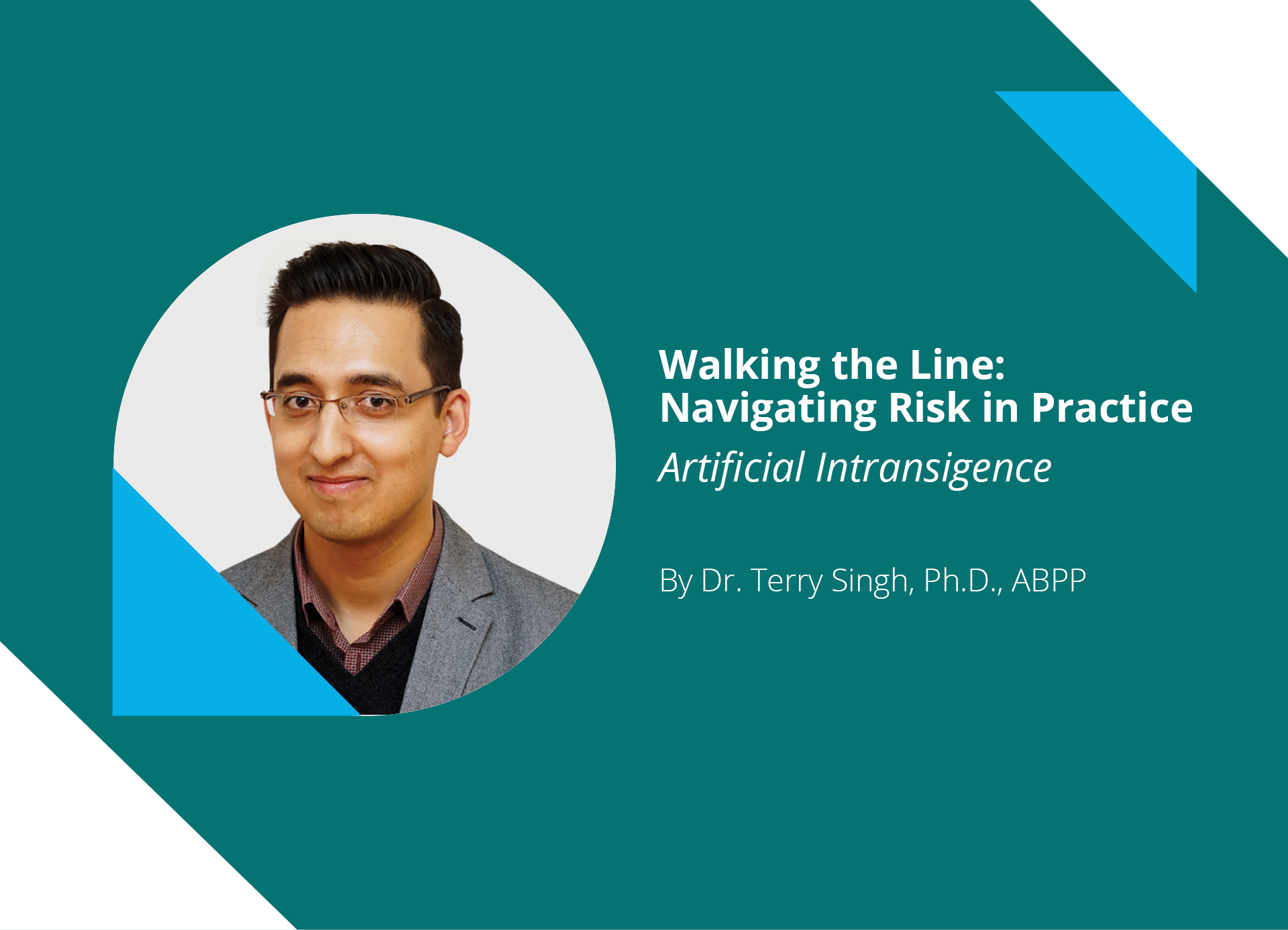
3 minute read
Walking the Line: Navigating Risk in Practice
Artificial Intransigence
By Dr. Terry Singh, Ph.D., ABPP
Many of us woke up one morning over the last month to find that the robot invasion has taken its next step in the march towards total integration in our lives. Yes, artificial intelligence (“A.I.”) has now come for our inboxes, our phones, and our video call software, and there is precious little information out there as to how we are to manage it.
Responsible clinicians know to seek guidance from their regulatory bodies, and certainly the College of Alberta Psychologists (CAP) has been of great assistance to practitioners on a variety of fronts related to practice innovation, but it has always been and will always be the case that regulatory bodies move slower than innovations appear in our offices.
This is largely as it should be. After all, the folks at CAP are psychologists just like us, and they have no ability to apparate solutions to our practice dilemmas from the ether. Instead, CAP calls on those of us with relevant expertise, perhaps sets up a task force of some sort, from which practice guidelines may then arise. All of this takes time.
Do clinicians have the luxury of waiting around for guidance? In this instance, perhaps. There is no imperative, and certainly no requirement, to utilize A.I. in our practices. And, while we wait for such guidance, we can always consult with trusted sources. Last year, the Canadian Psychological Association released a briefing paper on Artificial Intelligence and Psychology, CAP’s Fall 2022 issue of their Monitor was focused on virtual care and related issues, and as far back as 2020 our own PAA released a Technology in Practice Taskforce Report, which includes a variety of practical recommendations for practice. It is difficult to see how a clinician confronted with this new technology would not benefit from reviewing these resources.
On the other hand, consider that the amount of A.I. that is incorporated into your practice tools today may very well be the least amount of A.I. that you use for the rest of your career. To borrow a phrase from an anthropomorphic, space-faring green cube: “Resistance may well be futile”. Some of my fellow olds might find this thought depressing, while other of our colleagues may see opportunities. Regulatory guidance is certainly not required to engage in responsible practice; however, education and conscientiousness are.
As always, ultimately the responsibility falls to you, dear clinician, to consider if and how to incorporate such new technology into your practice responsibly. One way to start? Look two paragraphs up.
Dr. Singh practises clinical and forensic psychology in Calgary, Alberta. The views reflected in Walking the Line are his own.
For future column suggestions, he can be reached at drsingh@abfp.ca.





